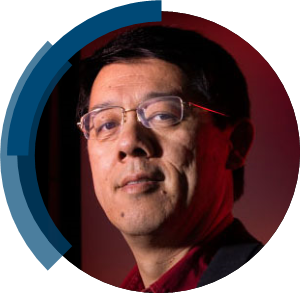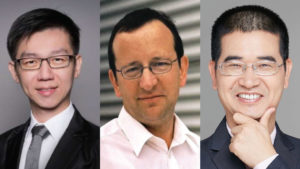Controlling anisotropy in nanomaterials
A collection of articles selected by Shouheng Sun
Professor Shouheng Sun, Brown University, USA, and Associate Editor for Nanoscale and Nanoscale Advances, presents his highlights of the latest research published in the journals on anisotropic nanomaterials.

“Anisotropy is an important characteristic that offers desirable direction-dependent properties in materials. Recent advances in nanoscience research have led to extensive studies in controlling anisotropy in nanomaterials to provide unprecedented control over their properties and functionality.
This online collection from Nanoscale and Nanoscale Advances highlights work on controlling anisotropy in nanomaterials to achieve desired chemical and physical properties. These articles provide understanding of the growth of anisotropic nanostructures at the atomic and molecular level, and explore their use in optoelectronic, magnetic, catalytic, biomedical and molecular separation applications.”
Read the collection
We hope you enjoy reading these articles.
Best wishes,
Professor Shouheng Sun
Brown University, USA
















 “The development of thermoelectric materials has been considered as a key sustainable solution in dealing with the global energy dilemma by harvesting electricity from waste heat. Nanostructuring is a critical approach to enhance thermoelectric properties and coupled with other strategies, the development of thermoelectric nanostructures has been an active research discipline in exploring high-performance energy materials.
“The development of thermoelectric materials has been considered as a key sustainable solution in dealing with the global energy dilemma by harvesting electricity from waste heat. Nanostructuring is a critical approach to enhance thermoelectric properties and coupled with other strategies, the development of thermoelectric nanostructures has been an active research discipline in exploring high-performance energy materials. We are delighted to introduce a new themed online collection on the recent advances in plasmonics. This collection is dedicated to the integration of experimental and in silico studies for the advances in plasmonics and for innovative development of efficient plasmonic-based applications in a variety of different fields.
We are delighted to introduce a new themed online collection on the recent advances in plasmonics. This collection is dedicated to the integration of experimental and in silico studies for the advances in plasmonics and for innovative development of efficient plasmonic-based applications in a variety of different fields.